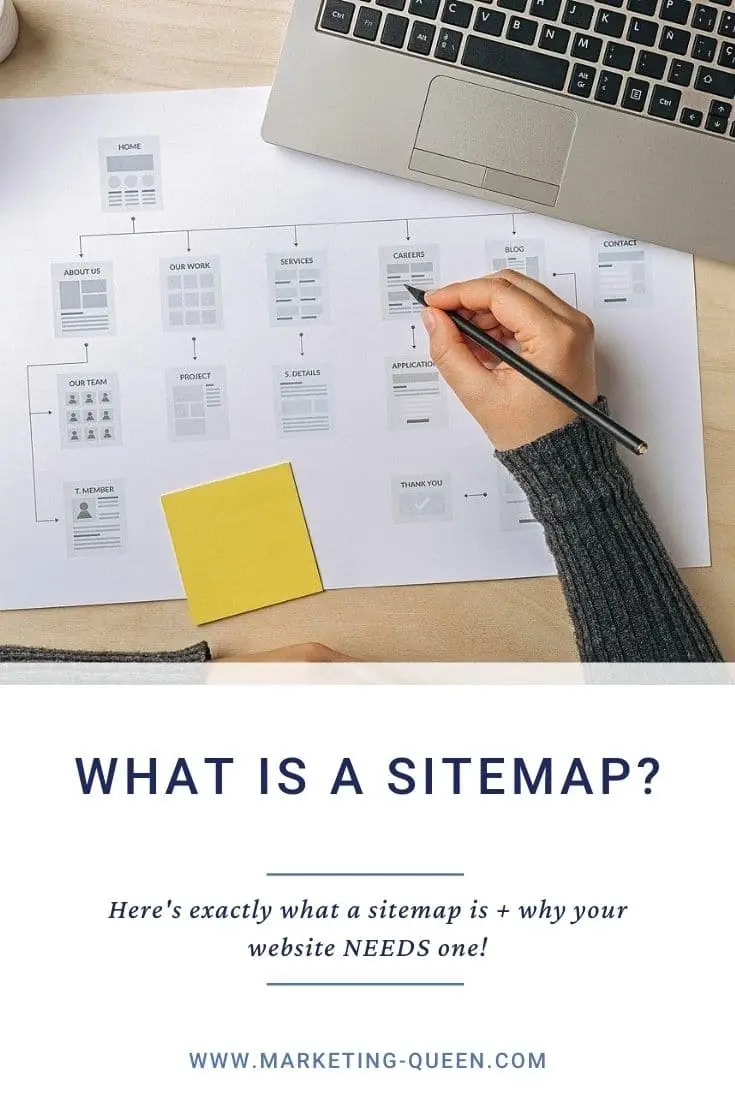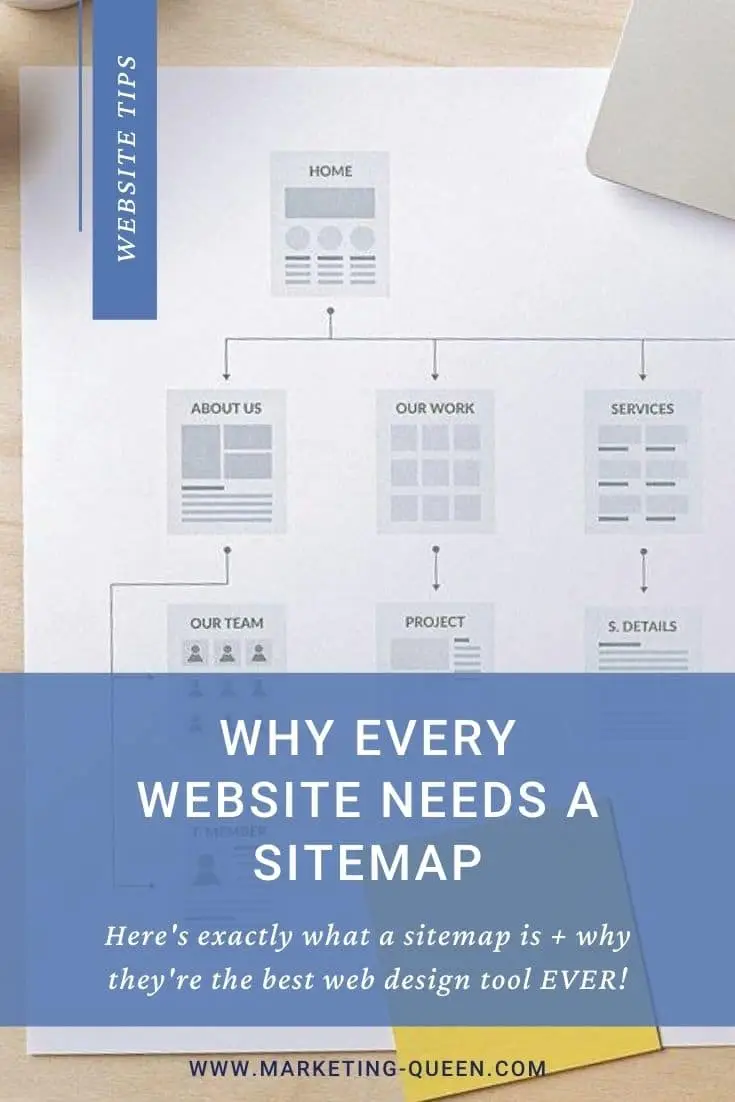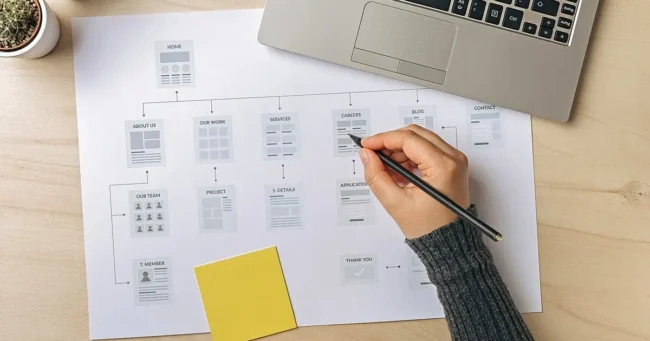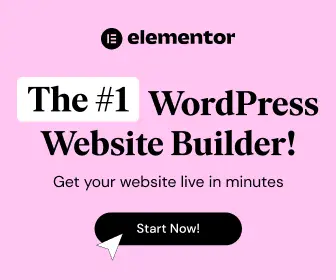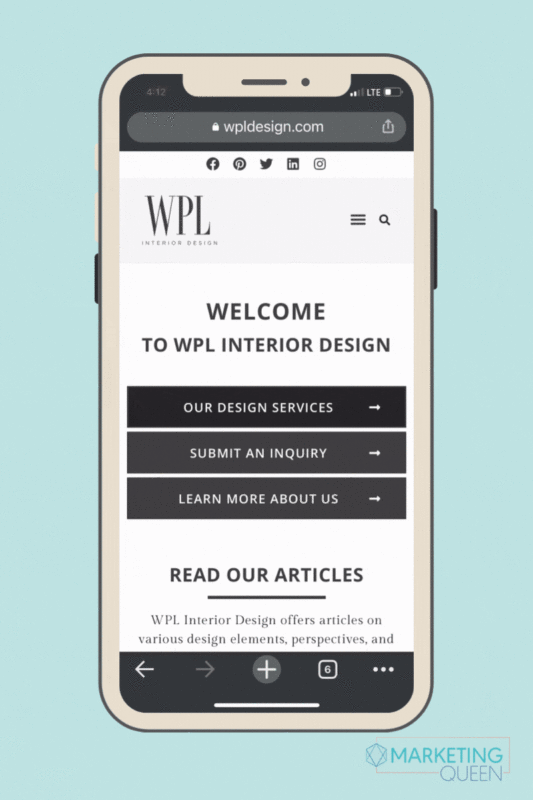So, you want to develop a website for your brand. Maybe it’s your first site ever, and you’re starting out with a blank slate. Maybe you’ve had a website for a while, but you feel like it needs a little zhoosh. Or maybe it needs to be reorganized or get a better flow to work more smoothly for your customers. Either way, a sitemap is the first step toward building your dream vision… or the dream site for you and your target audience!
What is a sitemap?
So, what is a sitemap anyway? Here’s the primary definition:
A sitemap is a design tool that lays out the organizational chart of your website’s pages. It’s a blueprint of how the site’s overarching structure will flow.
It’s about being strategic and creating a map to the essential pages of your website, without worrying about the creative elements just yet. After all, if you’re building a house, you need to design the blueprint for your house before you buy furniture for every room (for more on this analogy, check out this post).
A sitemap answers these two questions:
What pages are needed in your site?
What content do you plan to share with your visitors?
Once you’ve answered these questions, you can figure out how to organize your web pages in a way that anticipates how your site visitors will interact with your site. Then, you can build an uber functional website that will maximize user experience! (But you’ll do it in a simple way, before getting into the nitty-gritty process of building the actual website.)
Why do you need a sitemap?
When it comes to choosing website pages to include in your site, it’s easy to fall into the trap of “give me the basic five” (meaning Home, About, Services, Portfolio, Blog, and Contact). That might work for some businesses that are just starting out, but chances are your clients might want more from you so they can know, like, and trust you just from visiting your site. (This will lead them to inquire more about your business or convert into a sale!!)
A sitemap will help make your website top-notch, so it actually converts visitors into customers! Here’s how:
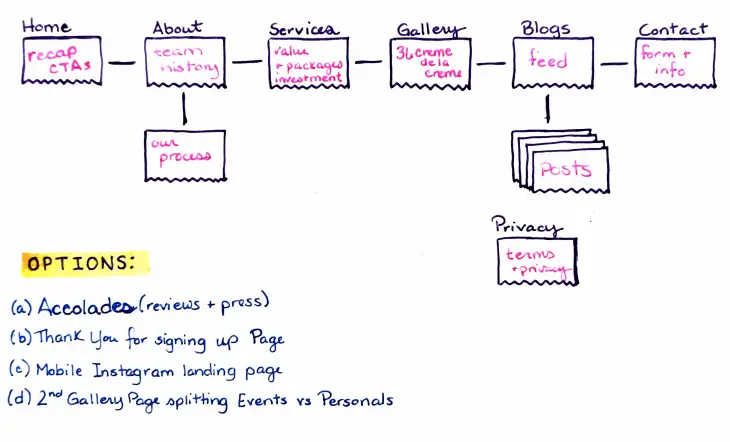
Sitemaps are all about functionality
Imagine that you’re building a new website for your brand. You already have a gorgeous logo and color scheme in mind. Yet, you still need to decide which pages your website will have. Let’s say you have three main packages of services. You’ll need to decide:
- Does each package need its own page of info?
- Does each package need its own page of testimonials?
- What about a Press page ? A Portfolio? Or any others?
The answer is that you probably don’t need all of these pages, but it could be a “yes” depending on the types of packages you offer and who you are offering them to.
If people can’t figure out how to work your website or quickly (and easily) find the information they’re looking for, they probably won’t stick around on the site too long. Your bounce rate will likely be high, which you’ll be able to see in your Google Analytics dashboard.
All your gorgeous design work goes to waste if your site isn’t navigable!
Starting with a sitemap is crucial because it helps ensure that your design work is built around functionality.
A sitemap for your website saves time and money
Websites are an investment. Doing things strategically from the start (AKA planning your website with a sitemap) will get you much more of a return on those dollars.
We plan your sitemap based on current analytics and by getting into your customer shoes. Additionally, we look at things from the eye of a customer that already knows you, and from one that knows nothing about your brand. We consider what information visitors will need to convert on your site and how we can build that information into the sitemap’s flow.
Let’s say you don’t start off with a sitemap. You then get deep into the design process and realize your website isn’t set up in a way that’s intuitive to what your site’s visitors are looking for. Or, maybe you have a website that’s been done for sometime, but it has a high bounce rate. Maybe it was thrown together haphazardly in the first place.
A sitemap can help prevent and/or fix these situations. It helps ensure you won’t waste time building a website that isn’t effective in the long run.
To put it simply: more hours spent on your website = more money you have to pay. If you can cut out some of those editing hours (by taking time to develop a sitemap), you’ll save yourself some extra time and money!
A sitemap keeps you focused
Working on a sitemap allows you to stay focused on the goals of your site. You get to really hone in on discovering what information and messaging are you trying to convey.
We’ll consider things like: What is your customer’s journey before they submit an inquiry? How can we create the spaces where your customers learn, become inspired, and then Engage?
We totally understand: it’s tempting to want to dive right into the design parts of your website.
Thankfully, a sitemap takes away those distractions. It allows you to build on your website’s goals, intentions, and/or purpose without having to worry about all of these other things (which will come later on)!
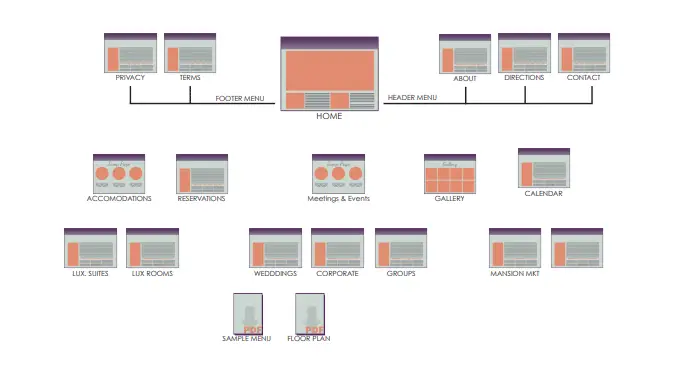
A sitemap makes your website more efficient and effective
Planning out your website via sitemap gives you a strategic advantage. How? Well, it allows you to set up your site in a way that is more likely to lead to conversions and/or sales by anticipating how your visitors think and how they’ll interact with your website.
Your website layout is a secret marketing tool!
A sitemap also makes your website more efficient by giving you clarity so you can avoid having duplicate information on your website. This is because a sitemap helps clarify the exact organization of your content.
By knowing which information will go on which page, you can avoid bogging your visitors down with redundant, excessive content. People are waaaaay more likely to engage with (and buy from) a website that’s easy to take in, anyway.
PLUS, the clarity you have on what needs to be completed in terms of the content and assets per website page doesn’t just help your site’s visitors. It also really simplifies the process of building your website. Anytime we can minimize the chances of you becoming overwhelmed, that’s a win in our book!
Are you ready to develop your sitemap?
So, now that you know the answer to “What is a sitemap?” and why they’re so darn helpful, are you ready to develop your own?
Maybe you know you want and need a sitemap, but aren’t sure where to start. To begin, you can ask yourself questions like…
- What information is most important to share on my website?
- What will visitors to my site be looking for?
- How can I best share what my website visitors want to see?
Want some help answering these questions? Let us know! Our team LOVES to nerd out over sitemaps and all things web design. Drop us a message if you’re ready for a sitemap for your website to see if we can help!
Did you enjoy this blog post? Pin it for later…
